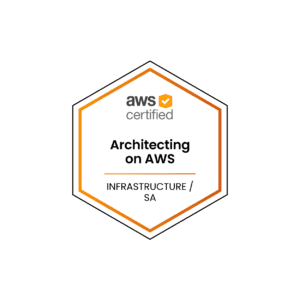
Login / Register
- Courses
Explore Level
Explore Product
Explore Category
Highlights
- Certifications
- Room Rental
- Highlights
- Contact Us
- Courses
Explore Level
Explore Product
Explore Category
- Certifications
- Room Rental
- Highlights
- Contact Us
Login / Register
HCIA-Datacom V1.0 includes the following contents: Routing and switching principles, basic WLAN principles, basic knowledge of network security, basic knowledge of network management and O&M, and basic knowledge of SDN and programming automation.
After completing the training, you will be able to:
Understand the definition of data communication and the capacity model of data communication engineers
Understand the network reference model and the entire data communication process
Be familiar with the VRP system and be able to perform basic operations
Understand IPv4 address protocol and related concepts
Understand the forwarding principles of Layer 3 devices such as routers and Layer 3 switches
Understand the concept of routing and use static route or OSPF to build a Layer 3 network
Understand basic Ethernet concepts and describe the functions and working principles of Layer 2 switching devices
Be familiar with common Ethernet protocols, such as VLAN, Spanning Tree Protocol, link aggregation and stacking
Configure ACLs and AAA to provide basic security solutions for the network
Be familiar with the NAT protocol and master the NAT Configuration in different scenarios
Master the configuration of common services on enterprise networks, such as DHCP, FTP and Telnet
Understand basic WLAN concepts and complete basic configurations of small or medium sized WLAN networks
Understand basic WAN concepts and WAN solutions such as MPLS and SR
Have general knowledge of basic concepts of enterprise network management
Be familiar with traditional network management and SDN-based network management solutions
Have a good command of IPv6 protocols and be able to build small-scale IPv6 networks
Have a good command of the campus network construction process and be able to independently construct small-sized campus networks
Understand the basic concepts of SDN and programming automation and master the basics of Python
Engineers who need to master basic datacom knowledge and capabilities, and have capabilities in small- and medium-sized network planning and design, deployment implementation and O&M optimization
Those who want to become Data Communication Engineers
Those who want to obtain the HCIA-Datacom Certification
Be familiar with PC operations.
Basic understanding of IT technologies and network knowledge.
Data Communication Network Basics
Network Reference Model
Huawei VRP Basics
Network Layer Protocol and IP Addressing
Network Layer Protocol
Concept, Classification and Special IP Addresses of IPv4
IP Network and IP Subnet Calculation
IP Network Address Planning
IP Routing Basics
Basic Working Principles of Routers
Routing Table Concepts
Routing and Forwarding Features
Static Route Configuration
OSPF Basics
Basic Features of OSPF
OSPF Application Scenarios
Working Principle of OSPF
Basic OSPF Configuration
Ethernet Switching Basics
Basic Concepts of Ethernet
Concept of MAC Address
Working Process and Principles of Layer 2 Switches
Composition and Formation of a MAC Address Table
VLAN Principles and Configuration
Background of VLAN
Basic Concepts and Principles of VLAN
VLAN Data Communication Process on a Layer 2 Network
Basic VLAN Configuration
Spanning Tree Protocol
Background of STP
Basic Concepts and Working Principles of STP
Basic Concepts of RSTP and Improvements Compared with STP
Basic STP Configuration
Other Layer 2 Loop Elimination Technologies
Ethernet Link Aggregation and Switch Stacking
Basic Concepts of Link Aggregation
Working Principles of Manual Link Aggregation
Working Principles and Features of Link Aggregation in LACP Mode
Basic Concepts of iStack and CSS
Implements Communication Between VLANs
Working Principles of Sub-interfaces
Working Mechanism of Layer 3 Switches
Sub-interface Configuration
VLANIF Configuration
ACL Principles and Configuration
Basic Principles and Functions of ACLs
Basic Structure and Matching Order of ACL Rules
Usage of Wildcard Mask
Basic ACL Configuration
AAA Principles and Configuration
Basic Principles and Application Scenarios of AAA
Basic Configuration of the Local AAA
NAT Basics
Background of NAT
NAT Classification and Technical Principles
NAT Configuration in Different Scenarios
Network Services and Applications
WLAN Overview
Basic Concepts of WLAN and History of 802.11 Protocol suite
WLAN devices
WLAN Networking Mode
WLAN Working Process
Basic WLAN Configuration
WAN Technology Basics
Basic WAN Concepts
Common WAN Technologies
Working Principles of PPP and PPPoE
Configuring PPP and PPPoE
Basic Concepts of MPLS/SR
Network Management and O&M
Basic Concepts of the NMS and O&M
Common NMS and O&M Methods and Tools
Working Principle of SNMP
SDN-based NMS and O&M Solution
IPv6 Basics
Comparison Between IPv6 and IPv4
Basic Concepts of IPv6
Format and Principle of the IPv6 Packet Header
IPv6 Address Format and Address Type
IPv6 Address Configuration Method and Procedure
Static and Dynamic IPv6 Address Configuration
IPv6 Static Route Configuration
SDN and NFV Basics
Basic SDN Concepts
Huawei NFV Concepts
Basic NFV Concepts
Huawei NFV Products and Solutions
Network Programming and Automation
Traditional Network O&M Status Analysis
Implementation of Network Automation
Programming Language
Python Coding Specifications
Implement Basic Automatic O&M Using Python telnetlib
Typical Networking Architecture and Cases
Campus Network Architecture
Campus Network Lifecycle
Campus Network Construction Cases
Campus Network Construction Practice
Enquire for More Info
CERTIFICATION

CERTIFICATION

CERTIFICATION

CERTIFICATION

WhatsApp Us Any Time:
+6012-641 2009Email Us 24/7 Hours:
marketing@infosyte.comOur Location:
Setiawalk, Puchong
Subscribe our newsletter to get our latest Update & news
Copyright © 2025 | All Rights Reserved.